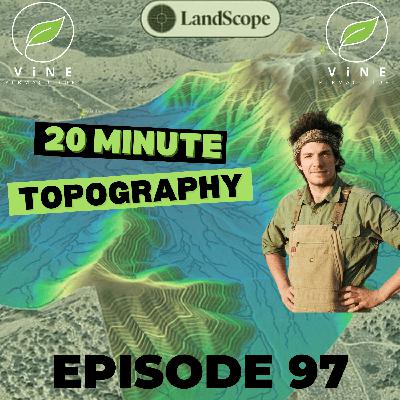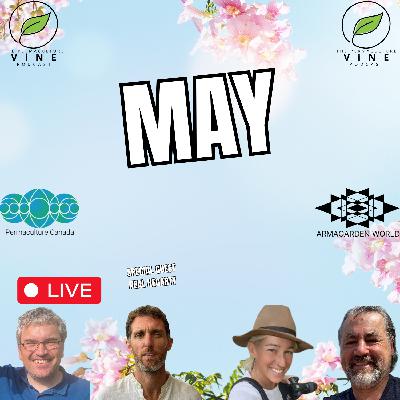100. Why Would You Need a Permaculture Design?
Description
Permaculture is more than just a gardening method—it’s a way of designing systems that work in harmony with nature. In Episode 100 of The Permaculture Vine Podcast, hosts Cormac, Lindsay, and Graham chat about what is permaculture, what problems does a design solve, why hire a designer, and the design process.
Defining Permaculture Design
At its core, permaculture design is about creating sustainable relationships between people and the land. As Lindsay explains:
"Permaculture design considers all the systems—water, climate, land, topography, soil, flora, fauna, fungi, the finances of the people, and the community involved—and creates something where you’re building a relationship between people and the land they inhabit."
Graham adds historical context, tracing permaculture back to its roots in Australia, where Bill Mollison and David Holmgren coined the term as a combination of "permanent agriculture" and later "permanent culture." The focus was on shifting away from destructive annual monocropping toward perennial systems that protect and regenerate soil.
"The premise was using perennial crops to avoid the annual tilling, spraying, and erosion that destroys soil. It’s about providing food, medicine, and pollinator habitat without disrupting the earth every year."
What Problems Does Permaculture Solve?
Permaculture isn’t just for farmers or homesteaders—it’s a solution for anyone who wants to work with nature rather than against it. Some key problems it addresses include:
1. Food Security & Self-Sufficiency
2. Water Management
3. Community Building
4. Mental Wellbeing & Empowerment
Why Hire a Permaculture Designer?
You could learn everything from YouTube or a Permaculture Design Course (PDC), but hiring a designer offers key advantages:
1. Avoiding Costly Mistakes
Lindsay points out that soil type, water flow, and plant selection aren’t always obvious to beginners. A designer helps you:
* Choose the right plants for your soil (e.g., blueberries need acidic soil, which Graham learned the hard way).
* Place elements (like ponds or windbreaks) where they’ll be most effective.
2. Saving Time & Effort
Designers bring years of experience—Graham has completed over 70 designs across multiple climates, while Lindsay specializes in regenerative and artistic landscape integration.
3. Access to a Network
Permaculture Canada (Lindsay and Graham’s team) connects clients with installers, nurseries, and educators who align with ethical, sustainable practices.
4. Customized Solutions
Every property is unique. A designer tailors plans to your goals, budget, and timeline—whether you need a small urban garden or a large-scale farm.
The Permaculture Design Process
If you’re considering a permaculture design, here’s what to expect:
1. Initial Consultation
* Discuss your goals (food forest? water retention? wildlife habitat?).
* Assess your land’s potential and limitations.
2. Site Analysis & Design
* Designers evaluate sun, wind, water flow, and soil.
* Draft a plan (often with multiple revisions).
3. Implementation
* Some clients DIY, while others hire installers (like Graham’s team).
* Phasing is common—start small and expand over years.
4. Ongoing Support
* Permaculture is a long-term relationship. Designers check in, adjust plans, and help troubleshoot.
Ready to Get Started?
* Need help figuring out what’s right for your property?Book a 1:1 consultation with Cormac: https://vinepermaculture.com/product/consult/
* Looking for full design services?Visit Permaculture Canada: https://permaculturecanada.world/shop/?ref=etcvdgzj
Final Thoughts
Permaculture design isn’t just about planting trees—it’s about creating systems that regenerate land, nourish communities, and empower people. Whether you’re a beginner or an experienced gardener, working with a designer can help you avoid pitfalls, save time, and create a thriving ecosystem.
What’s your biggest permaculture challenge? Let us know in the comments!
Get full access to Cormac Harkin at cormacharkin.substack.com/subscribe



















